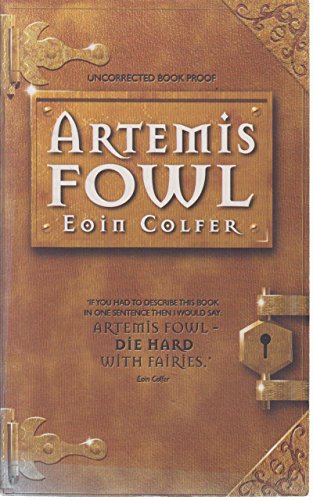My last post talked about my renewed interest in the writing and the written word in general spurred on by the Hyperion series of novels by Dan Simmons. But this was a renewed interest, what sparked it initially?
Like a lot of kids born in the mid-’90s my induction into literature came from the Harry Potter series by J.K. Rowling. While captivating and engaging at the time, I was a kid who liked technology; video games, computers, the New (capital N). So when Rowling constructed literary devices that excluded technology from her series I was disappointed to say the least. (Other inconsistencies notwithstanding, like the claim that wizards can’t conjure food, yet Professor Slughorn does it in the 5th book?)

The books that really hooked me were the Artemis Fowl series by Eoin Colfer. The first book, Artemis Fowl, is the story of a 12 year old boy (points if you guess his name) whose father is missing. Artemis’ father is the head of a nonspecific “criminal empire”, Colfer likely omitting grisly details for the youth audience. As his father is missing and his mother bedridden from an illness, Artemis is head of the household. Artemis takes it upon himself to restore the family to their previous status and in doing so gain the financial resources to find his father. The way he intends to do this is by capturing a mythical creature, a fairy, using his genius intellect, stalwart companion Butler, and the latest technology (of 2001).
In my mind the original printing of Artemis Fowl is one of the, to use a decidedly unacademic turn of phrase, coolest novels for a young person. Printed in paperback, the image above shows the presentation, mimicking the fairy sacred volume “The Book”. The similarity to the Borsuk reading is funny and I didn’t think of that until writing this. At the bottom of each page was writing in the fairy language, Gnomish. You can see an example on the both the center of the cover pictured above as well as the image of a page below.

Eventually Artemis obtains a copy of The Book and painstakingly translates it, with opposite pages in the center of the novel having the original passage in Gnomish and translated into English. This issued a challenge to the reader: Can you figure out the same thing as Artemis? I said yes. Books draw in readers naturally, lacking images and sounds they force the reader to fill in the gaps, create their own experience. But to me, the cipher was different. Not only was I creating and engaging with the story, I became an active participant alongside the protagonist, doing exactly what he did!
The first editions of the novel are paperbacks with the decorative cover, matching the publishing conventions of the time for fiction aimed towards younger people. What sets Artemis Fowl apart as a book is the way in which it engaged with the reader and presented an opportunity to learn more. You didn’t have to do the cipher to finish the book, it was just a story about a phlegm pot cleaner, but it connected with me not only on a narrative level but on an emotional level. I felt a sense of accomplishment from doing the cipher, something I can’t say I’ve felt from another book, apart from slogging through Capital.
P.S. Don’t watch the movie. Just… don’t.